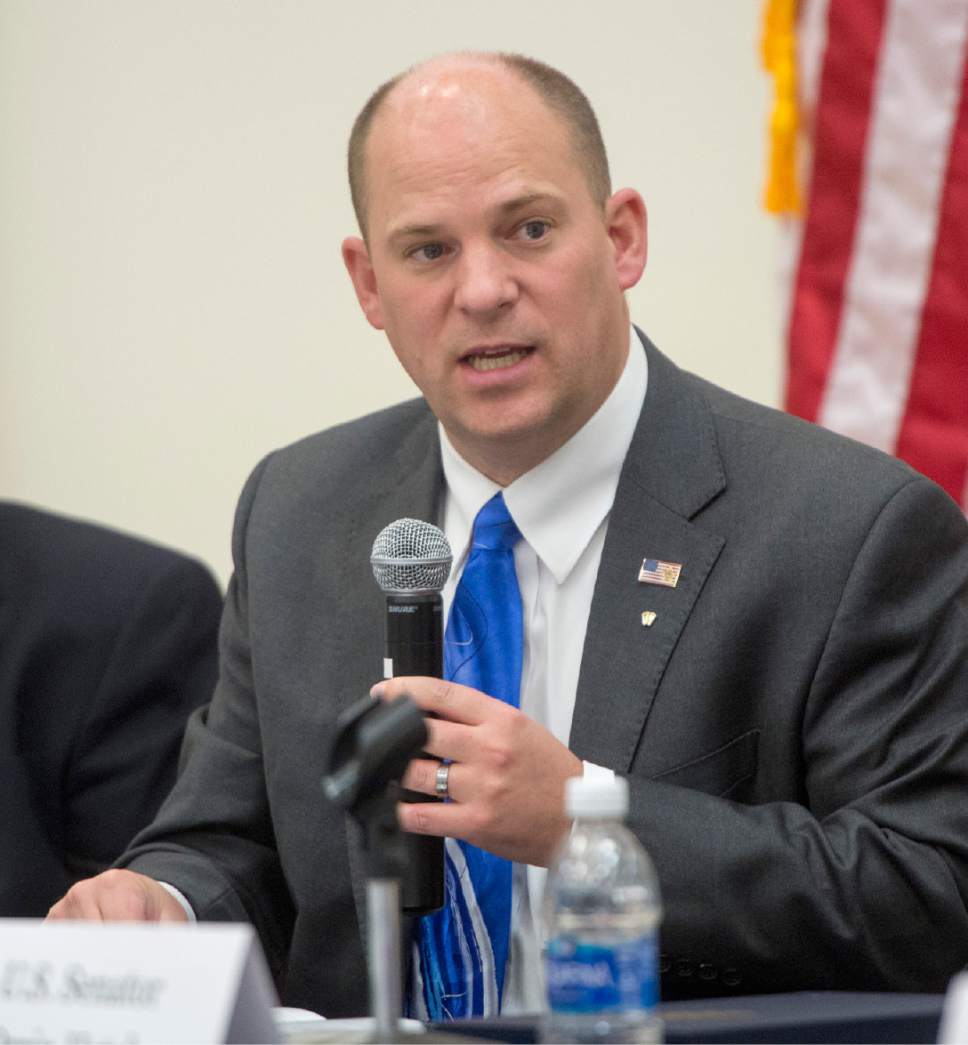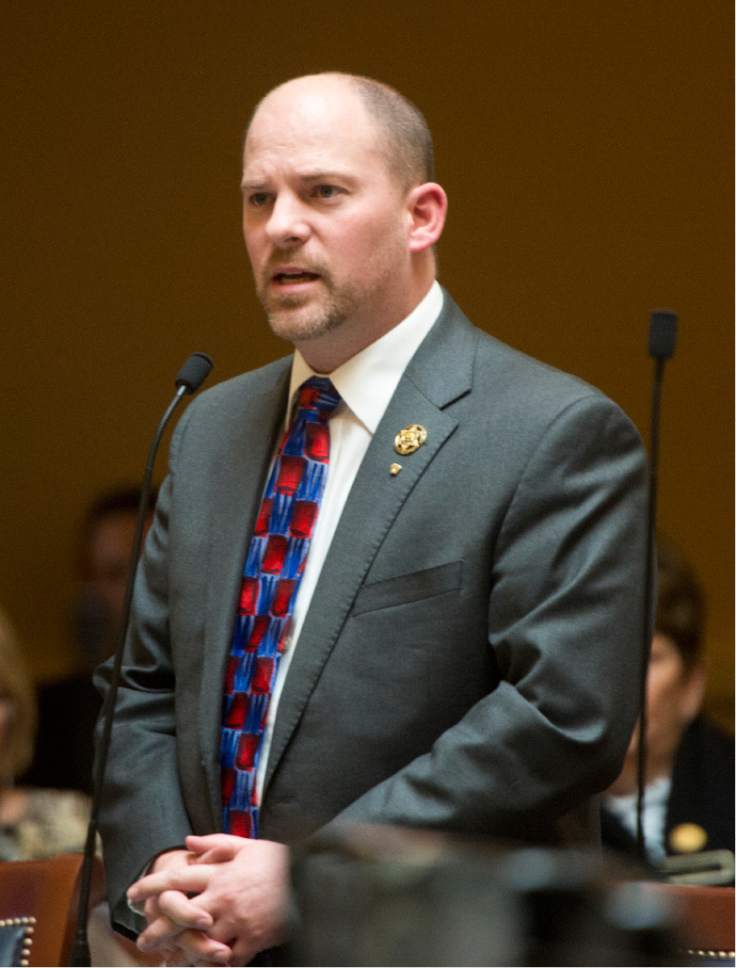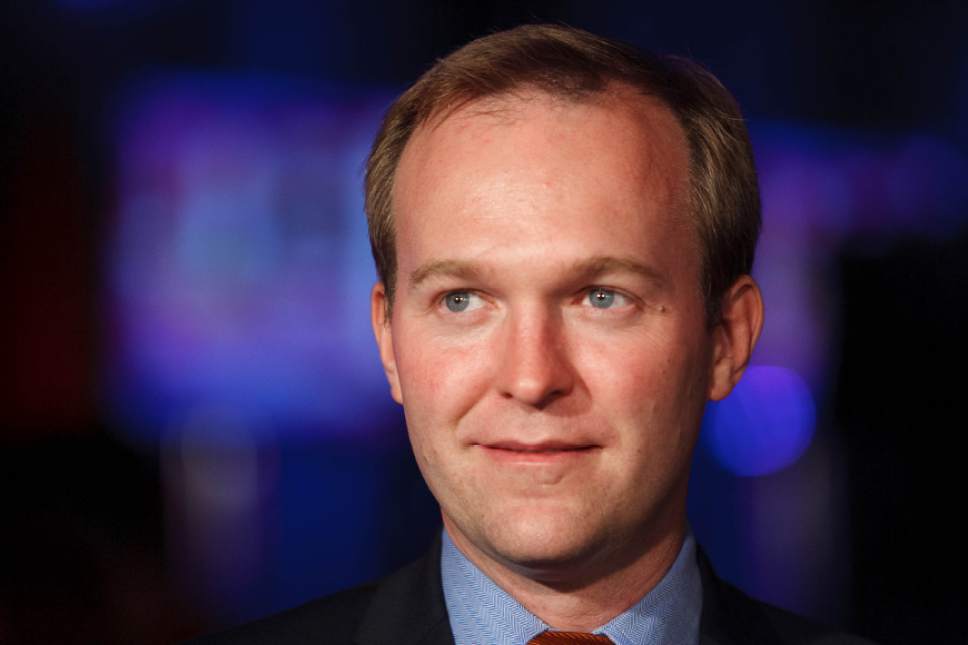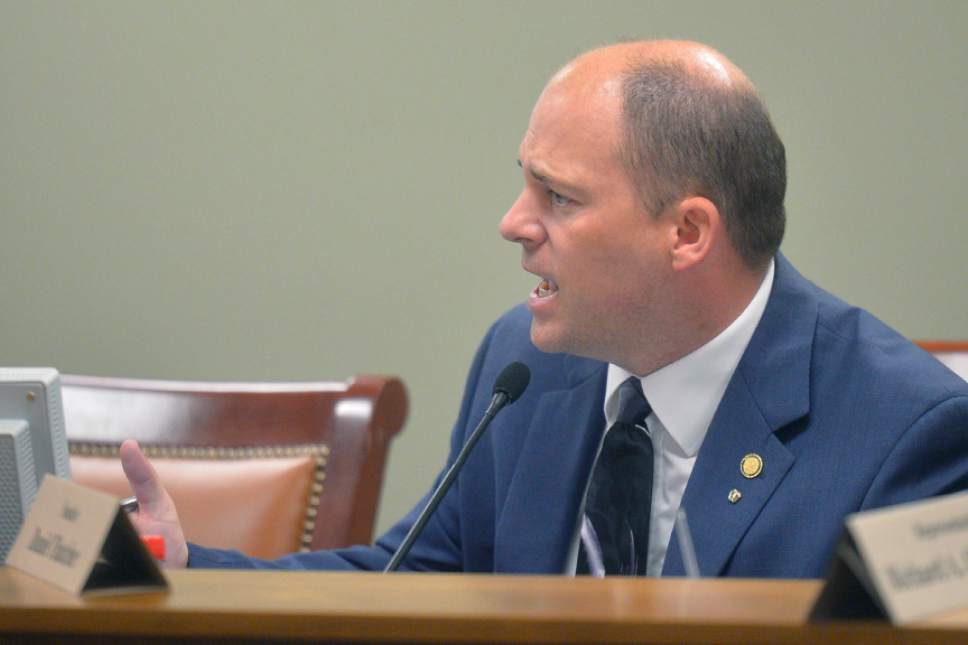This is an archived article that was published on sltrib.com in 2017, and information in the article may be outdated. It is provided only for personal research purposes and may not be reprinted.
Residents of South Salt Lake and West Valley City struck a desperate, pleading tone during what they thought was their last opportunity to dissuade leaders from siting a homeless shelter in their communities.
Hundreds lined up at the state Capitol to voice concerns to a 16-member committee that has until March 30 to weigh seven sites identified by the county and recommend one for a new shelter.
In the hallway, Sen. Daniel Thatcher, R-West Valley City, suggested to those waiting to speak that Salt Lake County Mayor Ben McAdams should let that deadline pass without issuing a recommendation.
Lane Morris, director of the West Valley City Housing Authority, told the committee the situation — choosing between two west side, already burdened cities — recalled for him a junior high school bully who used to ask his fellow students which arm they'd like to be punched in.
"That's exactly how this feels here today," Morris said.
As it turned out, Wednesday's public hearing would not be the last chance for public input, McAdams decided after the hearing.
A purchase agreement was only just reached Wednesday for a fourth South Salt Lake site at 3432 S. 900 West, and McAdams said another forum will be held Monday from 6 to 8 p.m. for comments specific to that site and another one at 3380 S. 1000 West that was announced earlier this week.
He told attendees earlier that while "to most people here tonight, it does seem that this is out of the blue," he has spent more than 2 1/2 years trying to understand what needs to be done to reduce area homelessness — though conceded that he didn't begin to rate any county sites until mid-February, given that the previous plan called for four sites within Salt Lake City borders.
South Salt Lake Mayor Cherie Wood began the hearing by repeating her claim that a developer told her the county favors one of the two newly proposed sites and wondered aloud if there was any point "if the site has already been chosen behind closed doors."
She and other residents and business owners in the town of 24,000 ran through the list of regional services already located in South Salt Lake, and Wood choked up as she concluded by saying "We can no longer be the city that gets all of the unwanted government facilities."
West Valley City has vowed to sue or refuse to cooperate with service providers should the county recommend one of three proposed sites there. It's home to the county's largest share of affordable housing, outside of Salt Lake City, and has done its share, leaders reiterated before blasting the county for refusing to solicit their opinion.
"It should not be a fight with winners and losers," said Mayor Ron Bigelow. "It should be a process of compromise, if done correctly."
Roughly 200 attendees filled every seat in a stuffy Senate Building conference room while overflow crowds listened in smaller conference rooms on either side.
Many fanned their faces with fliers handed out at the entrance. Some parents held their children, swaying and rocking them to keep the quiet.
The committee — most of whom listened studiously and took notes — agreed to hear comments well beyond the scheduled two hours.
McAdams urged listeners to hold their applause so more people could speak, but at times they could not be restrained. Particularly well-received were suggestions that McAdams site a shelter in his own neighborhood, or at least in more affluent areas of the county.
Ryan Christensen, who works in aerospace and defense contracting at Christensen Industries, said customers like Boeing and Lockheed Martin regularly audit his business and already have problems with the vagrancy associated with an 88-bed permanent supportive housing facility at Grace Mary Manor. His employees are often chased to their cars, he said.
"If this is approved, we will leave, and we will leave the county," Christensen said.
Officials in both cities have said a shelter would further tax stretched-thin resources.
South Salt Lake resident Sarah Howe said she lived in Salt Lake City's downtown shelter after coming out as a lesbian at age 15 and later worked a graveyard shift across the street at an overflow shelter.
She worked to earn a degree, she said, and now lives in South Salt Lake because "this is the community that I can afford to live in."
Road Home employee Ryan Parker told the committee the uncertainty was a further stress for the already burdened population that he serves.
Leaders have committed to a plan to close The Road Home-operated emergency shelter at 210 S. Rio Grande St. by July 2019, despite a capacity at the three new shelters that is contemplated anywhere from 400 to 550 beds fewer.
"I have no idea, what the hell it is that you folks are doing," Parker said.
The county's shelter is expected to have at least 200 beds. Majority Whip Francis Gibson suggested during the Legislative session that it could include in excess of 300, and Salt Lake City Mayor Jackie Biskupski has implied that it would serve single men, while the city's shelters will house single women and a gender-segregated population.
McAdams said Wednesday that the populations won't be determined until the site is selected and its merits are assessed. For instance, he said, the proximity of the Jordan River might be a detriment to a site if it were to house a high-risk single male population, but it might be an asset for women and families.
The March 30 deadline is tied to $10 million in funding for construction of three new shelters, including two 200-bed shelters already sited in Salt Lake City.
Thatcher said he was trying to get McAdams to "press pause" on the recommendation.
"The only consequence is he doesn't get $10 million to build something that hasn't been sited," Thatcher said. "… The money goes nowhere. That's how appropriations work."
Told by a listener, "Ben's a liar," Thatcher replied "I know he is."
Thatcher said the Legislature can tweak the appropriation in special session, when it could also consider a proposal from Rep. Steve Eliason, R-Sandy, that would reimburse a chosen city up to $900 per bed for the new facility.
"Sen. Thatcher's wrong," McAdams said. "I've spoken with legislative leadership, and I think there was an alignment that happened during the session. To think that representatives and senators from across the state care about this to that extent that they're going to stay at the table indefinitely, I think is a misconception."
Rep. Angela Romero, D-Salt Lake City, told the committee she voted for the funding bill thinking the sites would be dispersed throughout the county and was dismayed that they were all located in two cities.
Thatcher also told constituents that McAdams "wrote" the funding bill, and chose the deadline.
McAdams said Legislative leaders asked for a site to be selected by the end of the session and he negotiated an extension that would allow for a public process, which has also included three open houses.
The committee will meet again Tuesday for deliberations.
McAdams said the committee will issue their impressions, and the ultimate recommendation falls to him.
The state Homeless Coordinating Committee is scheduled to meet next April 10.









